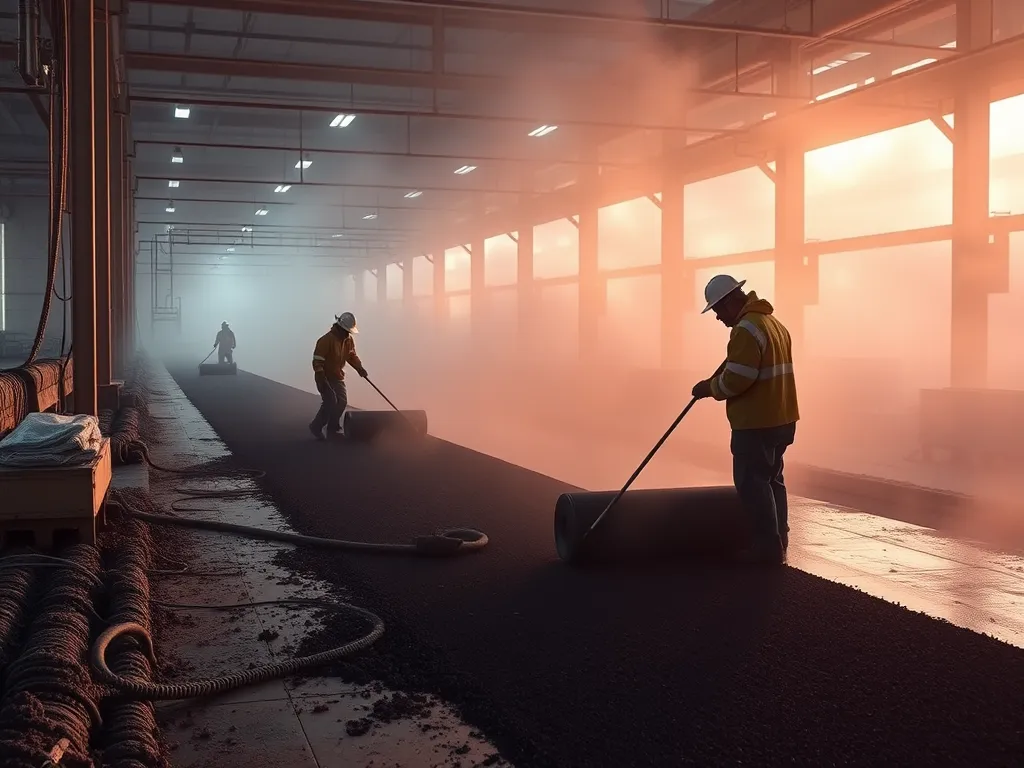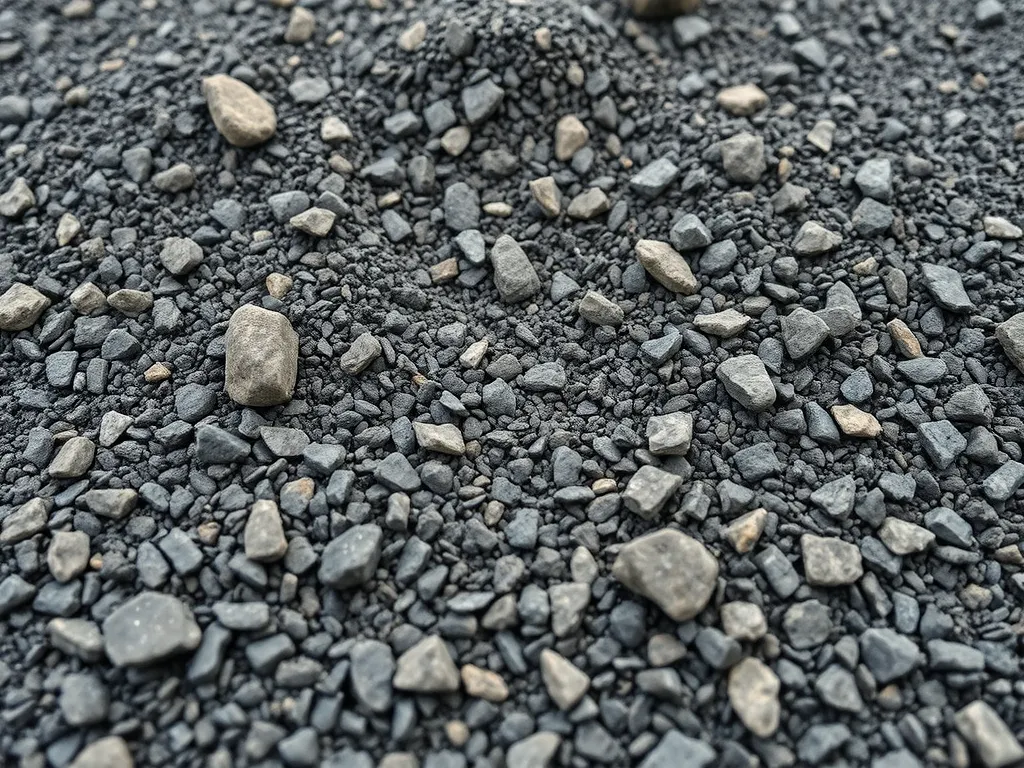Common Mistakes to Avoid When Operating a Paver Machine: Expert Tips
Published on: October 21, 2025 | Last Updated: April 14, 2025
Written By: George Voss
Operating a paver machine effectively requires avoiding common errors that lead to uneven pavement, equipment damage, and costly rework. Proper paver operation demands attention to pre-operation checks, material handling, and temperature control – factors directly impacting pavement durability and project timelines.
This guide identifies seven critical mistakes during asphalt paving operations. Learn how to inspect screed plates and conveyor systems, maintain consistent paver speed, manage mix temperatures between 275-325°F, and prevent aggregate segregation. Understand why skipping daily lubrication can reduce auger lifespan by 40% and how improper roller selection creates density variations exceeding 5%.
Contents
- Ignoring Pre-operation Paver Machine Checks
- Improper Asphalt Compaction Techniques
- Mishandling Paver Speed and Alignment
- Neglecting Screed Operation Best Practices
- Mismanaging Asphalt Temperature Control
- Overlooking Material Feed Consistency
- Environmental Considerations in Paving
- Frequently Asked Questions
- Closing Thoughts
- Additional Resources for You:
Ignoring Pre-operation Paver Machine Checks
Starting work without full paver diagnostics ranks among top paver machine operation errors. A 10-minute inspection can stop 80% of common paving machine mistakes linked to mechanical failures.
Failing to Inspect Screed and Conveyor Systems
Built-up material in conveyance paths creates 35% more downtime during projects. Check flight bars, chains, and slat systems for alignment. Confirm screed heaters reach 300°F minimum to avoid mix sticking.
Overlooking Asphalt Buildup on Components
Leftover mix hardens into crusts that block auger rotation. Use diesel-based cleaners on hardened bitumen. Buildup exceeding 1/4″ thickness alters material flow rates by 15%.
Skipping Lubrication Of Critical Parts
Dry pivot points account for 22% of paver machine common problems. Apply lithium-based grease to all zerks daily. Track rollers need high-temperature grease every 8 operating hours.
Increased Wear on Augers and Hydraulics
Unlubricated auger bearings fail 3x faster. Hydraulic pumps lacking oil develop internal scoring at 160 PSI+. Budget $2,500+ for component replacements avoidable through proper greasing.
While machine preparation sets the stage, how you handle asphalt once laid determines road quality. Up next: critical factors in achieving optimal compaction.
Improper Asphalt Compaction Techniques
Compaction quality directly determines pavement performance. Even minor errors during this phase create weaknesses that lead to early failure. Two frequent slip-ups with paver equipment involve roller selection and temperature management.
Using Incorrect Roller Types or Weights
Three main rollers handle asphalt compaction: vibratory (high-frequency vibrations), pneumatic (rubber-tired pressure), and static (weight-only). Using a 10-ton vibratory roller on a thin overlay crushes aggregates, while a light static roller fails to densify thick binder layers. Match roller weight to mix design – dense-graded Superpave mixes need 8-12 tons for 92% density targets.
Impact on Asphalt Density and Longevity
Insufficient compaction below 90% density allows air voids over 8%, accelerating water infiltration and freeze-thaw damage. Over-compaction above 98% squeehes out binders, causing surface raveling. Both scenarios cut pavement life by 35-50%, demanding repairs in 3-5 years instead of 7-10.
Compacting Outside Temperature Guidelines
Asphalt must stay within 275°F to 175°F during compaction. Below 175°F, PG 64-22 binders lose viscosity, preventing aggregate realignment. Rolling above 275°F displaces hot mix, creating uneven surfaces. Track infrared thermometer readings every 15 minutes – a 20°F drop in 10 minutes signals rushed operations.
Premature Cooling and Surface Defects
Cold ambient temps below 50°F or wind speeds over 10 mph cool mats too fast. This traps roller marks, causes thermal cracking, and leaves open textures (over 1/8” voids). Fog sprays or insulating blankets maintain workable temps, preventing $85/ton material waste from rejected sections.
While temperature management remains critical, operator control during laydown presents its own challenges.

Mishandling Paver Speed and Alignment
Proper paver movement ranks among the most overlooked aspects of error-free asphalt placement. Even minor deviations in speed or path straightness create visible defects that shorten pavement lifespan.
Inconsistent Forward Motion During Laydown
Varying travel speeds above 15 feet per minute disrupt material flow through the screed. Operators often accelerate to compensate for truck delays, creating thin spots with 5-10% lower density. Sudden stops leave ridges requiring manual correction.
Segregation of Asphalt Mix Components
Stop-start operation separates larger aggregates from finer binders. PG 64-22 asphalt mixes lose 12-18% stability when coarse stones cluster in isolated areas. These weak zones crack under traffic loads within 2-3 years instead of the projected 10-year service life.
Failing to Maintain Straight Paver Path
Drift exceeding 1 inch per 100 feet creates alignment issues. Worn track shoes or misadjusted sensors on grade control systems cause most steering errors. Experienced operators verify stringline positioning every 50 feet during curbside passes.
Wavy Surfaces and Edge Imperfections
Crooked paving paths leave ¼” height variations that reflect headlights at night. Poorly aligned joints between lanes trap water, accelerating base erosion. Repairing 500 feet of uneven edges costs $1,200-$1,800 due to extra milling and tack coat requirements.
Mastering machine movement sets the stage for proper material distribution – which hinges entirely on optimized screed configurations.
Also See: Essential Driveway Maintenance Tools for Homeowners
Neglecting Screed Operation Best Practices
Screed performance directly impacts pavement quality. Overlooking key protocols creates visible defects, reduces road lifespan, and increases repair costs. Operators must master temperature control, angle settings, and component maintenance.
Incorrect Heating or Angle Adjustments
Cold screeds below 250°F cause asphalt sticking and inconsistent spread. Excess heat above 300°F burns binders, weakening mat integrity. Angle misalignment alters material flow – a 1° error in front screed height changes mat thickness by ¼ inch.
Uneven Asphalt Thickness and Texture
Improper adjustments create roller-like dips or ridges in fresh asphalt. A ⅛-inch deviation across lanes triggers premature cracking. Rough textures from cold screeds reduce skid resistance, increasing hydroplaning risks at 35+ mph.
Ignoring Strike-off Plate Maintenance
The strike-off plate (leveling blade) requires hourly cleaning. Dried asphalt buildup exceeding ½ inch thickness drags material, creating grooves. Warped plates from thermal stress cause $18–$25 per sq yd repair costs.
Material Drag and Surface Irregularities
Debris on plates leaves ¼-inch-deep striations. These grooves trap water, accelerating rutting in freeze-thaw cycles. Unaddressed drag lines demand milling at $0.50–$0.75 per sq ft before overlay.
Mastering screed mechanics prevents 70% of mat defects. Next, temperature control errors during laydown present separate challenges…

Mismanaging Asphalt Temperature Control
Temperature control separates smooth pavements from failed ones. Every degree matters when handling hot mix asphalt (HMA) between production and compaction.
Delaying Laydown After Truck Delivery
Asphalt mix loses 2-5°F per minute after leaving the plant. Start spreading within 10-15 minutes of truck arrival. Delays below 225°F create bonding failures.
Cold Joint Formation Risks
Gaps between cooled and fresh asphalt layers cause weak seams. Cold joints account for 18% of premature pavement failures according to NAPA studies. Prevent them by:
- Maintaining laydown temps above 275°F for PG 64-22 binders
- Overlapping previous mats by 3-6 inches before trimming
- Using infrared thermometers to verify material heat
Improper Mat Cooling Management
Rushed cooling creates thermal shock. Target 25-35°F/hour cooling rates for optimal density development. Track ambient conditions – wind speeds above 15mph accelerate heat loss by 40%.
Cracking from Rapid Temperature Drops
Thermal contraction below 150°F induces micro-fissures. These cracks expand under traffic loads, creating alligator patterns within months. Mitigate through:
- Timed roller passes (breakdown rolling above 220°F)
- Liquid asphalt emulsion fog seals on fresh surfaces
- Night paving when temps stay above 50°F
Mastering heat management prevents three of the most frequent paver machine operation errors. Next, we examine how material feed inconsistencies sabotage smooth pavement textures.
Overlooking Material Feed Consistency
Steady material flow ranks among the top factors affecting pavement quality. Uneven feed rates create surface defects and material waste, costing crews up to $150 per ton for mix replacements. Operators who ignore this step face common paver operation mistakes linked to poor road performance.
Intermittent Hopper Loading Patterns
Loading the hopper in bursts forces the paver to work in feast-or-famine cycles. This uneven supply starves the augers during low phases, then overloads them when trucks dump fresh asphalt. Such paving machine operation errors reduce mat density by 5-8% in affected zones.
Surface Variations and Color Disparities
Intermittent feeding leaves visible streaks and blotchy patches. Thermal differentials between hot and cooler asphalt batches cause color shifts. These flaws often require costly infrared repairs at $75-$120 per square yard to fix.
Wrong Auger Speed Settings
Augers rotating too fast (above 25 RPM) scatter the mix, while slow speeds (below 15 RPM) let material pile up. Both scenarios rank as common errors paving machine crews make, disrupting the head of material needed for smooth laydown.
Aggregate Separation in Asphalt Mix
Mismatched auger speeds push larger stones to the edges and fines to the center. This segregation weakens the pavement structure, cutting PG 64-22 binder effectiveness by 30%. Expect raveling and rutting within 12-18 months on affected sections.
Beyond feed management, external factors like weather play a key role in material behavior. Next, we explore how environmental conditions amplify paving operation mistakes.

Environmental Considerations in Paving
Paving crews face unique weather and site challenges. Ignoring these risks leads to common paver operation mistakes that hurt both roads and profits.
Ignoring Weather Forecasts
Rain within 24 hours of paving causes major issues. Fresh asphalt needs time to set. Wet mix loses 30-50% of its strength if water seeps in before curing.
Rain Contamination of Fresh Asphalt
Water in hot mix cools it too fast. This weakens bonds between rocks and binder. Result: raveling (loose stones) within weeks. Jobs hit by rain often need full-depth repairs at $3-$5 per square foot.
Improper Dust Control Measures
Dust on road bases stops asphalt from sticking. A single dust layer over 1/16 inch thick cuts bond strength by half. Use water trucks or sweepers to keep subgrades clean.
Adhesion Failure with Subgrade Materials
Dirt or sand on the base? The tack coat won’t grip. This causes slippage under traffic loads. Fixes cost up to 3x more than proper prep work. Always test surfaces with a hand swipe – no debris should stick to your palm.
Smart crews check hourly weather apps and assign a team member to dust control. These steps prevent 80% of paving machine mistakes tied to site conditions. Next, let’s tackle how machine setup errors lead to costly rework.
Frequently Asked Questions
What Happens if Asphalt is Not Compacted Enough?
If asphalt is not compacted adequately, it can lead to significant issues such as the development of air voids, which may increase water infiltration and contribute to premature pavement failure. Insufficient compaction decreases the longevity of the asphalt, necessitating repairs much sooner than planned.
How Can You Keep an Asphalt Paver Straight?
To maintain a straight path while operating an asphalt paver, it is essential to continuously monitor and adjust the steering systems. Additionally, using string lines for alignment checks, ensuring the machine is well-maintained, and having a skilled operator can significantly enhance accuracy during laydown.
What Are the Principles Of Asphalt Paving?
The principles of asphalt paving include proper material selection, ensuring adequate compaction, controlling temperature throughout the process, and maintaining consistent material flow. These factors contribute significantly to the durability and quality of the pavement being laid.
What is the Life Expectancy Of Asphalt Pavers?
The life expectancy of asphalt pavers can vary based on usage and maintenance, but they typically last between 10 to 15 years with proper care. Regular inspections, timely repairs, and adherence to operational best practices can extend the lifespan of the equipment significantly.
Closing Thoughts
Avoiding common mistakes when operating a paver machine is critical for achieving high-quality asphalt surfaces. Regular pre-operation checks, maintaining proper compaction techniques, and ensuring consistent material feed can greatly reduce issues like uneven surfaces and premature wear. Prioritize the right temperature control and be mindful of environmental factors to enhance durability and performance.
By following these guidelines, paver operators can maximize efficiency and extend the lifespan of both equipment and asphalt installations. For more valuable insights and resources, check out Asphalt Calculator USA.


